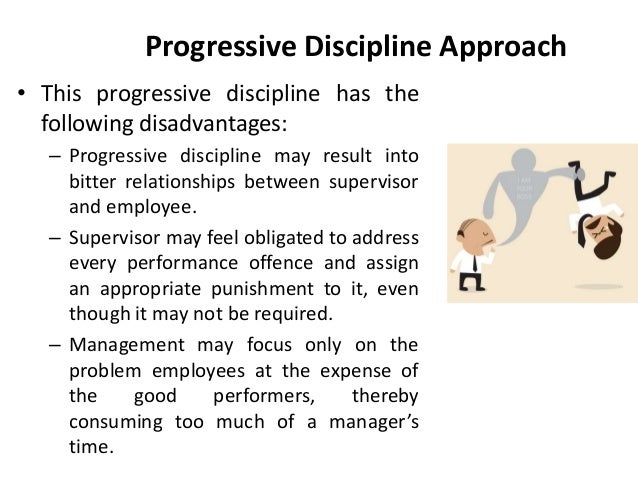Investigating The California Coast's Toxic Algae Bloom And Its Effects

Table of Contents
Causes of California Toxic Algae Blooms
Several factors contribute to the proliferation of California toxic algae blooms. Understanding these causes is crucial for developing effective mitigation strategies.
Nutrient Pollution
Excess nutrients, primarily nitrogen and phosphorus, fuel the explosive growth of algae. These pollutants originate from various sources:
- Agricultural Runoff: Fertilizers used in agriculture contribute significantly to nutrient pollution in coastal waters. For example, intensive farming practices in the Central Valley lead to substantial nitrogen runoff into the Sacramento-San Joaquin River Delta, ultimately reaching the ocean.
- Sewage Discharge: Untreated or inadequately treated sewage releases large amounts of nitrogen and phosphorus into the marine environment. Aging sewage infrastructure in many coastal cities exacerbates this problem.
- Urban Stormwater: Runoff from urban areas carries pollutants, including fertilizers, pet waste, and oil, into storm drains and eventually into the ocean. This contributes to elevated nutrient levels, fueling algal growth.
A recent study estimated that over 100,000 tons of nitrogen enter California coastal waters annually from various sources, significantly contributing to the severity of toxic algae blooms.
Climate Change Impacts
Climate change further exacerbates the problem by altering ocean conditions favorable to toxic algae growth:
- Rising Ocean Temperatures: Warmer waters create ideal conditions for certain toxic algae species to thrive and produce more toxins.
- Altered Water Currents: Changes in ocean currents can transport toxic algae to new areas, expanding their range and impact.
- Increased Ocean Acidification: Increased CO2 absorption by the ocean lowers pH levels, potentially affecting the growth and toxicity of certain algal species. Studies suggest that ocean acidification may interact with nutrient pollution, exacerbating the effects of both.
Natural Variability
While human activities play a significant role, natural oceanographic processes also influence the occurrence of toxic algae blooms:
- Upwelling Events: Upwelling, the process where nutrient-rich deep water rises to the surface, can trigger algal blooms, even in the absence of excessive nutrient pollution.
- Seasonal Changes: Seasonal variations in temperature, sunlight, and water currents influence the growth and distribution of algae.
Effects of California Toxic Algae Blooms on Marine Life
The consequences of toxic algae blooms on marine life are devastating and far-reaching:
Impacts on Fish and Shellfish Populations
Toxic algae produce potent toxins such as domoic acid and saxitoxin, which accumulate in shellfish and fish. This results in:
- Mass Mortality Events: High concentrations of toxins can directly kill fish and shellfish.
- Shellfish Closures: Regular monitoring and testing are crucial to prevent human exposure. When toxin levels exceed safety limits, shellfish harvesting is prohibited, impacting fishing communities economically. The economic impact on fisheries from these closures is substantial, affecting livelihoods and food security.
Impacts on Marine Mammals and Seabirds
Toxins bioaccumulate and biomagnify in the marine food web, impacting marine mammals and seabirds:
- Neurological Damage: Consumption of contaminated prey can lead to neurological damage, impairing their ability to hunt and navigate.
- Reproductive Issues: Exposure to toxins can affect reproductive success, leading to population declines. Sea otters, for example, are particularly vulnerable.
Impacts on Kelp Forests
Toxic algae blooms can severely damage kelp forests, a crucial habitat for many marine species:
- Kelp Forest Decline: Some toxic algae species can directly harm kelp, leading to widespread die-offs and ecosystem disruption.
- Broader Ecological Consequences: The loss of kelp forests has cascading effects on the entire ecosystem, affecting many other species that depend on them for food and shelter.
Effects of California Toxic Algae Blooms on Human Health
Exposure to toxins from harmful algal blooms poses significant risks to human health:
Exposure Pathways
Humans can be exposed to toxins through various pathways:
- Seafood Consumption: Consumption of contaminated shellfish is the primary route of exposure. Amnesic shellfish poisoning (ASP) and paralytic shellfish poisoning (PSP) are severe illnesses resulting from domoic acid and saxitoxin ingestion, respectively.
- Recreational Activities: Contact with contaminated water during swimming, surfing, or other recreational activities can lead to skin irritation or respiratory problems.
Health Risks and Symptoms
The symptoms associated with algal toxin exposure vary depending on the toxin and the level of exposure:
- Neurological Symptoms: Domoic acid can cause memory loss, seizures, and even death.
- Gastrointestinal Symptoms: Nausea, vomiting, and diarrhea are common symptoms.
- Respiratory Problems: Exposure to airborne toxins can cause respiratory irritation.
Public Health Monitoring and Response
Public health agencies play a vital role in monitoring and responding to toxic algae blooms:
- Monitoring Programs: Regular monitoring of water quality and shellfish toxicity is critical for early detection.
- Warning Systems: Public health advisories and beach closures are implemented to protect public health.
- Treatment and Prevention: Effective treatment options exist for some types of algal toxin poisoning, while preventative measures focus on reducing exposure risks.
Mitigation and Management Strategies
Addressing the challenge of California toxic algae blooms requires a multi-faceted approach:
Reducing Nutrient Pollution
Implementing strategies to reduce nutrient runoff from agriculture and urban areas is crucial:
- Sustainable Agricultural Practices: Promoting responsible fertilizer use, cover cropping, and other techniques can reduce nutrient runoff from farms.
- Improved Wastewater Treatment: Upgrading wastewater treatment plants to remove more nitrogen and phosphorus can significantly reduce pollution.
- Stormwater Management: Implementing green infrastructure, such as bioswales and rain gardens, can help filter pollutants from stormwater runoff.
Climate Change Adaptation
Adapting to the impacts of climate change on toxic algae blooms is essential:
- Early Warning Systems: Developing advanced monitoring and prediction systems can provide timely warnings about potential blooms.
- Improved Monitoring Technology: Investing in advanced technologies such as remote sensing and genomics can enhance our ability to detect and monitor blooms.
- Community Preparedness Plans: Developing community-level preparedness plans can help communities respond effectively to toxic algae events.
Research and Monitoring
Continued research and monitoring are vital for a comprehensive understanding of California toxic algae blooms:
- Research Initiatives: Funding research to understand the complex interplay of factors driving bloom formation and toxicity.
- Data Collection Methods: Improving data collection and analysis techniques to enhance our ability to predict bloom occurrence and severity.
- Predictive Models: Developing improved predictive models to forecast bloom events and inform management decisions.
Conclusion
California toxic algae blooms pose a significant threat to the state's environment, economy, and public health. Understanding the complex interplay of factors driving these blooms, from nutrient pollution and climate change to natural variability, is crucial for developing effective mitigation strategies. Reducing nutrient pollution, adapting to climate change, and investing in research and monitoring are essential steps toward protecting California's coastal waters and the communities that depend on them. Learn more about the issue, support research efforts focused on harmful algal blooms (HABs), and advocate for policies that promote sustainable land use practices and reduce nutrient pollution. Visit the websites of organizations like the California Ocean Protection Council and the National Oceanic and Atmospheric Administration (NOAA) for more information on California toxic algae blooms and how you can help.

Featured Posts
-
 Glastonbury Festival 2025 Resale Ticket Information And Purchase Guide
May 30, 2025
Glastonbury Festival 2025 Resale Ticket Information And Purchase Guide
May 30, 2025 -
 Bts Members V And Jungkooks Impressive Fitness Post Military Service
May 30, 2025
Bts Members V And Jungkooks Impressive Fitness Post Military Service
May 30, 2025 -
 The Vaccine Packaging Market Current Trends And Future Projections
May 30, 2025
The Vaccine Packaging Market Current Trends And Future Projections
May 30, 2025 -
 Glastonbury 2025 Ticket Resale A Complete Guide To Dates And Application
May 30, 2025
Glastonbury 2025 Ticket Resale A Complete Guide To Dates And Application
May 30, 2025 -
 Age De Depart A La Retraite Une Alliance Rn Gauche Envisagee
May 30, 2025
Age De Depart A La Retraite Une Alliance Rn Gauche Envisagee
May 30, 2025
Latest Posts
-
 The Scargill Parallel Analysing Rachel Reeves Approach To Industrial Relations
May 31, 2025
The Scargill Parallel Analysing Rachel Reeves Approach To Industrial Relations
May 31, 2025 -
 Is Rachel Reeves Following In Arthur Scargills Footsteps A Look At Labours Economic Strategy
May 31, 2025
Is Rachel Reeves Following In Arthur Scargills Footsteps A Look At Labours Economic Strategy
May 31, 2025 -
 Reeves Economic Policies Echoes Of Scargills Militancy
May 31, 2025
Reeves Economic Policies Echoes Of Scargills Militancy
May 31, 2025 -
 The Elon Musk Dilemma Challenges And Opportunities
May 31, 2025
The Elon Musk Dilemma Challenges And Opportunities
May 31, 2025 -
 Are Vets Being Forced To Compromise Care For Profit A Bbc Report
May 31, 2025
Are Vets Being Forced To Compromise Care For Profit A Bbc Report
May 31, 2025
